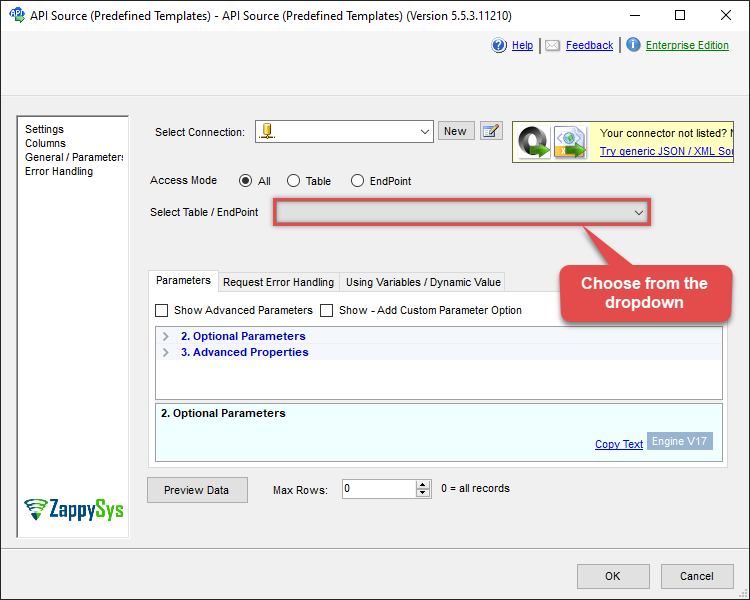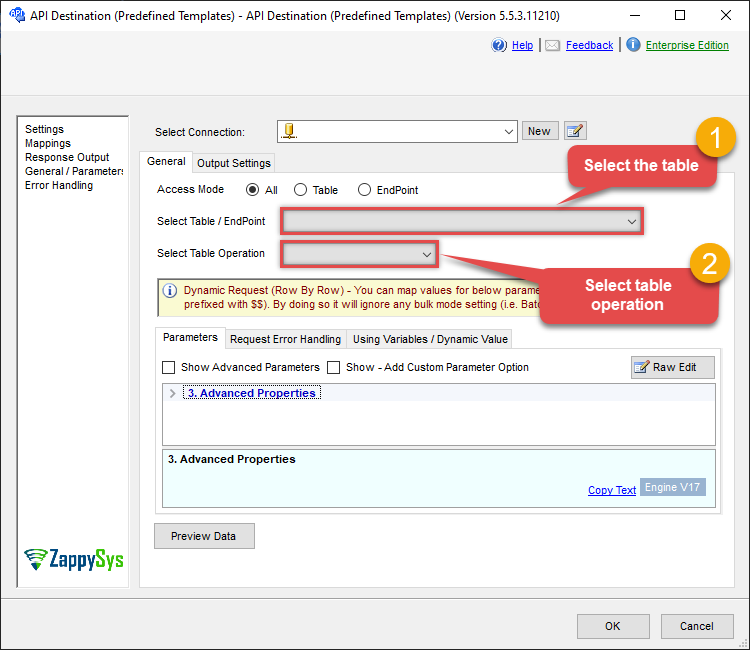Endpoint Delete User
Name
delete_user
Description
Related Tables
Parameters
| Parameter | Required | Options |
|---|---|---|
|
Name:
Label: AccountId |
Output Columns
| Label | Data Type (SSIS) | Data Type (SQL) | Length | Description |
|---|---|---|---|---|
| Response |
DT_NTEXT
|
nvarchar(MAX)
|
Input Columns
| Label | Data Type (SSIS) | Data Type (SQL) | Length | Description |
|---|---|---|---|---|
| AccountId |
DT_WSTR
|
nvarchar(4000)
|
4000 |
Examples
SSIS
Use Jira Connector in API Source or in API Destination SSIS Data Flow components to read or write data.
API Source
| Optional Parameters | |
|---|---|
| AccountId | |
| Continue On 404 Error (When record not found) | False |

API Destination
This Endpoint belongs to the Users table, therefore it is better to use it, instead of accessing the endpoint directly. Use this table and table-operation pair to delete user:
| Optional Parameters | |
|---|---|
| AccountId | |
| Continue On 404 Error (When record not found) | False |

ODBC application
Use these SQL queries in your ODBC application data source:
DELETE User
Deletes a single user
DELETE FROM Users
WITH (OUTPUT=1, accountId = '547059:136095a0-XXXX-XXXX-XXXX-3e4c66f26551', ContinueOn404Error=0)
delete_user endpoint belongs to
Users
table(s), and can therefore be used via those table(s).
SQL Server
Use these SQL queries in SQL Server after you create a data source in Data Gateway:
DELETE User
Deletes a single user
DECLARE @MyQuery NVARCHAR(MAX) = 'DELETE FROM Users
WITH (OUTPUT=1, accountId = ''547059:136095a0-XXXX-XXXX-XXXX-3e4c66f26551'', ContinueOn404Error=0)';
EXEC (@MyQuery) AT [LS_TO_JIRA_IN_GATEWAY];
delete_user endpoint belongs to
Users
table(s), and can therefore be used via those table(s).
